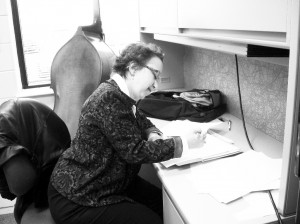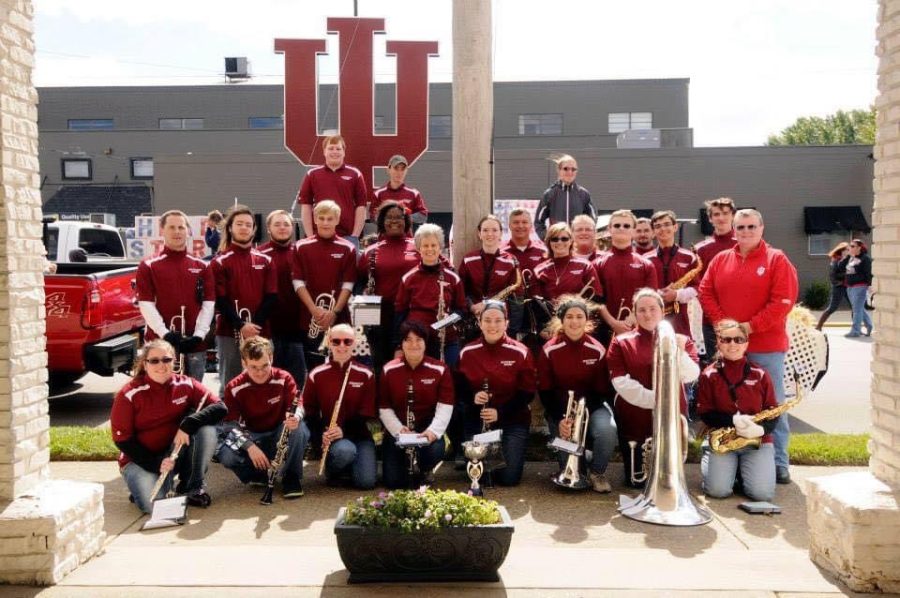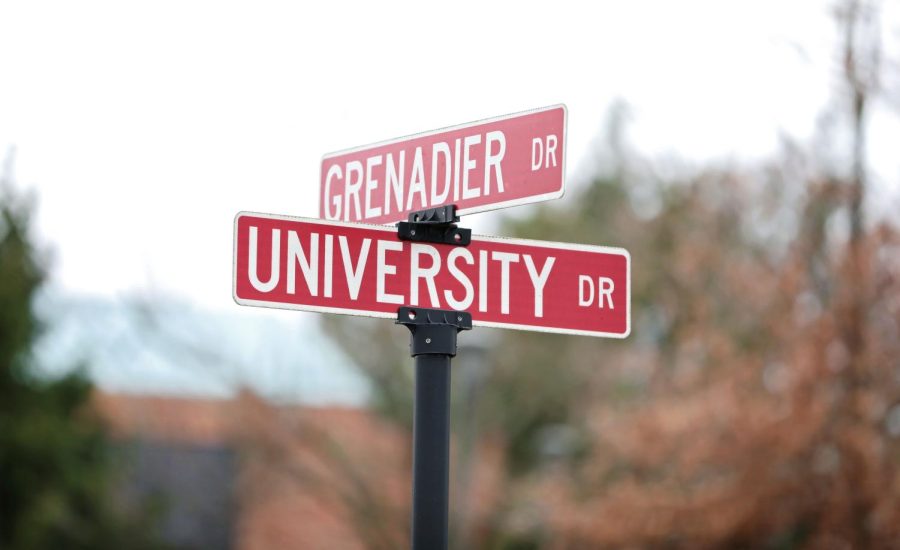For the past 35 years, Carl Kramer, retired adjunct professor of history, has loved coming to his job to impart his knowledge in a classroom full of students. However, teaching was only part of his career goal.
Kramer began work at IU Southeast in 1978, while working toward his doctorate degree at the University of Louisville. After graduating, he noticed there was little demand in the job market in his field of study for urban historians. He decided to continue work at IU Southeast as part-time faculty.
“I was teaching as an adjunct with the hope that I would get a full-time position,” Kramer said. “It hasn’t worked out that way.”
Adjunct professors, like Kramer, are faculty members, but their job differs from other employees, even full-time professors.
According to the Indiana University Southeast Handbook for Adjunct Faculty, adjunct faculty are appointed to teach part-time on a semester-by-semester basis. In order to teach an undergraduate course, adjunct professors must have obtained a master’s degree. Adjunct faculty normally do not have all of the rights and privileges of full-time faculty.
Joe Wert, dean of the School of Social Sciences and associate professor of political science, said that adjunct faculty come to IU Southeast for a few reasons.
“Many adjuncts work full-time jobs elsewhere, perhaps for local government agencies and private or non-private sectors,” Wert said. “They come to IU Southeast to impart their knowledge by teaching a few classes around their work schedules.”
Many times, retired IUS faculty may come back to teach a few classes, Wert said. There are also the adjuncts whose main job is adjunct teaching at several different places in the area, such as the University of Louisville.

Ann Niren, adjunct lecturer in music, has worked at IU Southeast for the past 25 years.
“There are adjuncts who have normal jobs,” Niren said. “Then, there are people like me who try to cobble together an existence as an adjunct.”
Niren said she came to IU Southeast to fill the position of a professor who was on maternity leave. Twenty-five years later, the professor has not yet returned and Niren said she feels secure in her position at IU Southeast, but her career as an adjunct was never her intention growing up.
“It’s not one of those things where I’ve always wanted to be an adjunct, or even a professor,” Niren said. “I just fell into it.”
There are some disadvantages to being an adjunct professor, Wert said.
Depending on their degree and duration of employment, adjuncts are paid close to $2,500 for one three-credit hour class per semester, Wert said.
Classes for adjuncts are not guaranteed, Wert said.
“We pay quite a bit less than some of the surrounding universities, and adjuncts can be pushed out of a class unexpectedly,” Wert said.
If the class of a full-time professor does not have enough students enrolled, then an adjunct professor’s class may be given to the full-time professor.
“Unfortunately, that happens many times at the beginning of the semester,” Wert said.
Wert said adjunct faculty do not receive benefits such as insurance and retirement. They do not receive money for travel and typically are not recipients of any type of grant money.
Alan Abbott, adjunct professor of history, has taught at IU Southeast for the past 10 years, but is not currently working this semester.
Abbott said he would like to become a better instructor, but IU Southeast does not pay for adjuncts to receive opportunities to better their skills.
“Adjuncts have limited office space,” Abbott said. “I wish for more private office space and I feel I can’t give or get real honesty in front of other adjuncts.”
Wert said that there are stipulations for schools that use adjuncts.
“The rule used to be that adjunct faculty could teach up to three sections per semester, but because of the way IU is complying with the Affordable Care Act, adjuncts can teach no more than two sections a semester,” said Wert.
According to the Indiana University Southeast Reference Book, there are 100 active, adjunct faculty this semester. Every 10 years, the North Central Association of Colleges and Schools’ accrediting body comes to IU Southeast to do an accreditation.
“They frown on schools who use above a certain percentage of adjuncts,” Wert said.
However, he said, it is difficult not to hire more adjuncts because they are less expensive to employ than full-time faculty.
“Schools like to use adjuncts, not only because they save on expense, but because they teach with their knowledge they have gained by using their field of study in their outside careers,” Wert said.
Adjuncts give a practical experience that may not be received from full-time faculty.
Although having an adjunct position may have drawbacks, Niren said she feels IU Southeast is a great place to work.
“I don’t have the monetary benefits, but I have benefits in other ways,” Niren said. “I feel well respected here, and I love my colleagues and students.”
Abbott said he has a day job, and he teaches around his work schedule.
“It is nice that being an adjunct is only part of what I do,” Abbott said. “It stays fresh and there is less stress by only teaching one or two classes.”
As for retirement, Kramer said he knew what his situation was and he and his wife have been careful with savings.
Niren said there has not been a full-time position to open up in her field, but if there is one in the near future, she would go for the opportunity.






